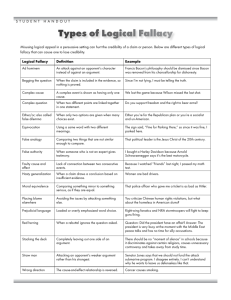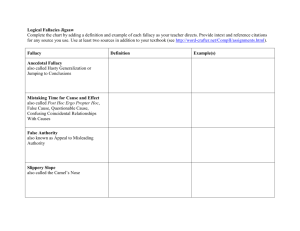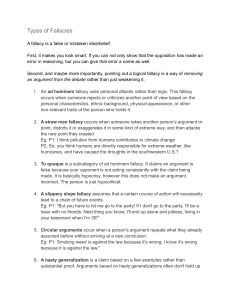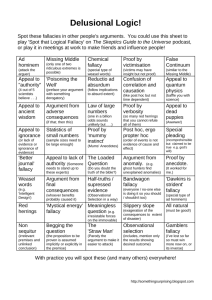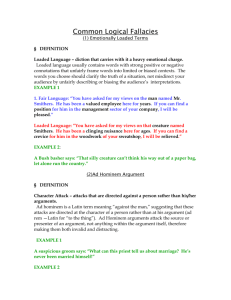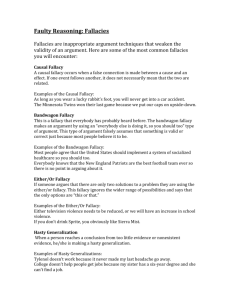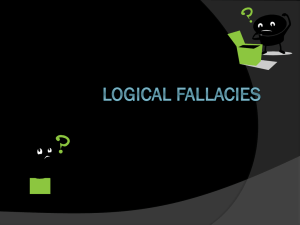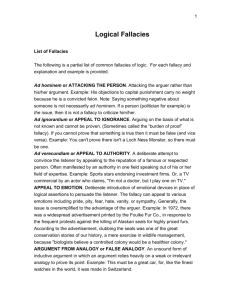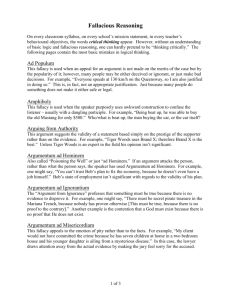Audience Analysis - Business Communication Network
advertisement
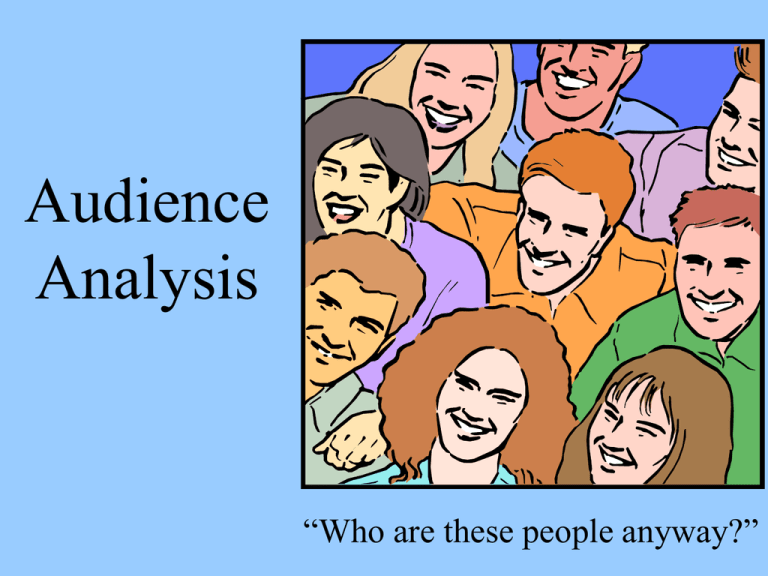
Audience Analysis “Who are these people anyway?” The Top Six Audience Needs 1. “We need you to know our demographics.” 2. “We need you to know where we come from literally and figuratively.” 3. “We need you to be culturally sensitive.” 4. “We need to be ethical.” 5. “We need you to know the logistics of your speaking event.” 6. “We need a reason to stay awake.” How You Get More Information Verbal communication Talk to a representative Hold focus groups Conduct surveys Fallacies • Misusing facts • Using stats deceptively • Defective testimony • Ad hominem argument • Post-hoc fallacy • Non-sequitur fallacy • Hasty generalizations • Straw man fallacy • The either-or fallacy • The bandwagon • The slippery slope • The red herring • Misusing facts: Changing your facts to support your cause. • Using statistics deceptively: Skewing your statistics to make them fit your cause. • Defective testimony: Misconstruing the expertise of the person you’re quoting. For example, if you say you’ve spoken with an “expert” from the Food and Drug Administration, make sure it’s not someone in the mail room! • Ad Hominem Argument: In Latin, “Attack on the man.” Attacking the individual instead of the argument. (“Those abortionists are all murderers and are going to hell!”—Although you may believe this, you should not have to tear someone down to give credibility to your case.) • Post Hoc: Association implies a cause and effect relationship. (“Eating vegetables can prevent cancer. I eat vegetables. Therefore, I won’t get cancer.” • Non-Sequitur: In Latin: It does not follow. (“Replace your Ford Explorer AT Wilderness Tires with Goodyear Tires. The seat-belts in the Explorer are bad, too.”) • Hasty Generalization: Stereotyping a group of people based on limited information. (“My grandfather tips poorly in restaurants, therefore all senior citizens tip poorly in restaurants.”) • Straw Man Fallacy: Exaggerating your opponent’s position to make it easier to argue. (“Senator Doe won’t support a bill for cleaner air. He wants everyone to have lung cancer.”) • Either-Or: Implying that there are only two ways to solve a problem. (“It’s either my way or the highway.”) • Bandwagon: The premise that “everybody’s doing it” so we should be doing it, too. • Slippery Slope: Fallacy of catastrophic expectation. (“If this college doesn’t get childcare, then mothers won’t be able to go to school, get good jobs, or feed their children.”) • Red Herring: Slipping in extraneous information, hoping your opponent won’t notice that you’ve diverted them from the original argument. (“Sorry you’re getting an “F” in the course, but, hey, did you see Survivor last week?”) Questions to Ask Yourself • What devices will I use in the introduction to gain attention and interest of your audience? • What steps will you take in the introduction to relate the topic to your audience? • What are the main points, and why are you using these particular main points for this audience? • What steps have you taken to make your language clear and appropriate to this audience? • What adjustments will you make in delivery—rate of speech, volume, tone of voice, gestures, etc., to communicate to this audience?
